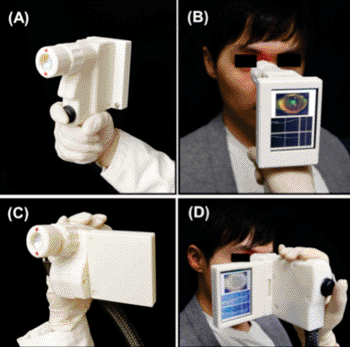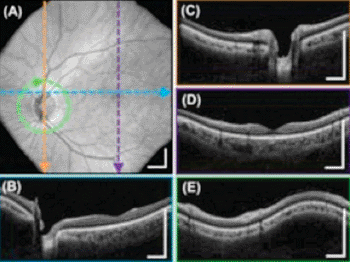New Hand-Held OCT Device to Simplify Early Detection of Retinal Disease
By MedImaging International staff writers
Posted on 31 Dec 2013
A novel hand-held optical device quickly scans a patient’s entire retina and so could aid in detecting early signs of a host of retinal diseases, including diabetic retinopathy, glaucoma, and macular degeneration.Posted on 31 Dec 2013
A team at the Massachusetts Institute of Technology (MIT; Cambridge, MA, USA) describes their new ophthalmic-screening instrument in a report by Lu, C.D. et al., published by The Optical Society (Washington DC, USA), December 20, 2013, in the journal Biomedical Optics Express. Although others have created hand-held devices using similar technology, the new design is the first to combine cutting-edge technologies such as ultrahigh-speed 3D imaging, a tiny micro-electromechanical systems (MEMS) mirror for scanning, and a technique to correct for unintentional movement by the patient. These innovations should allow clinicians to collect comprehensive data with just one measurement.
Many eye diseases should be detected and treated long before any visual symptoms arise, but few people visit eye specialists regularly. The MIT group, in collaboration with the University of Erlangen and Praevium/Thorlabs, has developed this portable instrument to improve public access to eye care. "Hand-held instruments can enable screening a wider population outside the traditional points of care," said Prof. James Fujimoto, MIT. They can be used at a primary-care physician's office or even in the developing world.
The instrument uses optical coherence tomography (OCT), which sends beams of infrared light into the eye and onto the retina. Echoes of this light return to the instrument, which uses interferometry to measure changes in the time delay and magnitude of the returning light echoes, revealing the cross-sectional tissue structure of the retina, similar to radar or ultrasound imaging. Tabletop OCT imagers have become a standard of care in ophthalmology, and current generation hand-held scanners are used for imaging infants and monitoring retinal surgery. The MIT group turned a typically large instrument into a portable size by using a MEMS mirror to scan the OCT imaging beam. The new device can acquire images comparable in quality to the conventional tabletop OCT instruments used by ophthalmologists.
To deal with the motion instability of a hand-held device, the instrument takes multiple 3D images at high speeds, scanning one particular volume of the eye many times but with different scanning directions. This makes it possible to correct for distortions due to motion of the operator’s hand or the subject’s eye.
The next step, said Prof. Fujimoto, is to evaluate the technology in clinical settings; however, the device is still expensive. "The hand-held platform allows the diagnosis or screening to be performed in a much wider range of settings,” said Prof. Fujimoto. He envisions that in the future hand-held OCT technology can be used in many other medical specialties beyond ophthalmology, such as in applications ranging from surgical guidance to military medicine.
Related Links:
Massachusetts Institute of Technology
The Optical Society
















